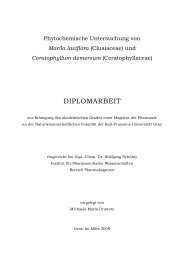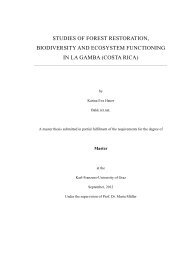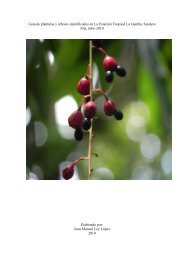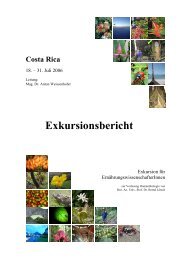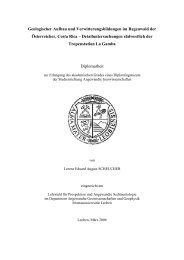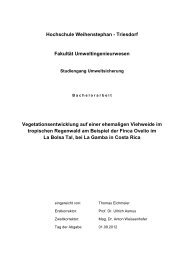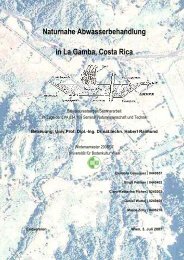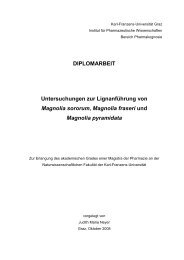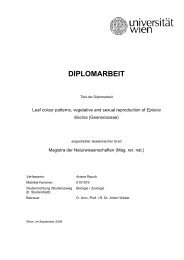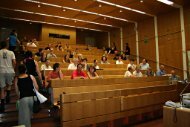Die Tropenstation La Gamba
Die Tropenstation La Gamba
Die Tropenstation La Gamba
Erfolgreiche ePaper selbst erstellen
Machen Sie aus Ihren PDF Publikationen ein blätterbares Flipbook mit unserer einzigartigen Google optimierten e-Paper Software.
<strong>Die</strong> „<strong>Tropenstation</strong> <strong>La</strong> <strong>Gamba</strong>“ in Costa Rica – Wissenschaftlicher Bericht<br />
TSCHELAUT, J.: Leaf litter decomposition and macroinvertebrates in a neotropical lowland<br />
stream, Quebrada negra, costa Rica. – Diplomarbeit, Univ. Wien, Fakultät für<br />
Lebenswissenschaften. Dep. für Limnologie und Hydrobotanik.<br />
One of the primary objectives of the study was to investigate the rivernetwork within the<br />
Rio Esquinas catchment. Rivers were analyzed with regard to abiotic parameters such as<br />
morphology, hydrology, hydrochemistry, sedimentology and canopy cover by the riparian<br />
vegetation. The work discusses differences between sites according to geological factors<br />
and the seasonal hydrologic characteristics from streams within the catchment.<br />
Furthermore, the morphometric-hydrological conditions of the Quebrada Negra, a 1 st<br />
order stream, were investigated in more detail.<br />
The decomposition and macroinvertebrate colonisation of leaf litter was investigated<br />
using litter bags placed over a 28 day period in the Quebrada Negra. Leaf decay rates and<br />
macroinvertebrate densities on leaf packs of Acalypha diversifolia (Euphorbiaceae),<br />
Cecropia obtusifolia (Cecropiaceae), Tetrathylacium macrophyllum (Flacourtiaceae) and<br />
Sloanea medusula (Elaeocarpaceae) were compared. The plants were chosen after their<br />
frequency and life history strategy (r- and K- strategists).<br />
Colonizer densities (total individuals and abundance of major taxa) were highest on<br />
Cecropia and Tetrathylacium leaves and lowest on Sloanea. Densities first increased with<br />
time on all 4 plant species but abundance on Acalypha, Cecropia and Tetrathylacium<br />
declined at the end of the study (day 28) when little of the leaves remained in the bags.<br />
Most of the variation in colonizer densities and species composition was explained by leaf<br />
type and time.<br />
The invertebrate community which colonised litter bags was dominated by taxa of<br />
mayflies (mainly Leptohyphidae), caddiesflies and Chironomidae.<br />
The plants differ in their content of tannins and anatomical cuts of the leaf material show<br />
the varying nature of the leaf structure which supports the result of the differences in<br />
decay.<br />
Throughout this study we analysed the relationship between taxonomical composition and<br />
functional organization of stream benthic communities and some environmental variables<br />
in riffle and pool sites of the Quebrada Negra. Local variations of abiotic factors, such as<br />
current velocity, substratum composition and water depth, shape the distribution of<br />
invertebrates. This investigation represents the first survey of the benthic invertebrate<br />
community from four different choriotops (habitat types) within the Q. Negra. Betweensite<br />
differences are discussed in relation to physical factors.<br />
Anschrift der Autorin:<br />
Mag. Julia Tschelaut<br />
tschuliebuhlie@hotmail.com<br />
89



